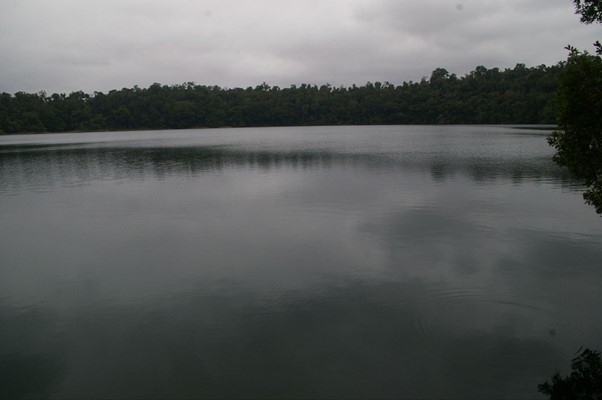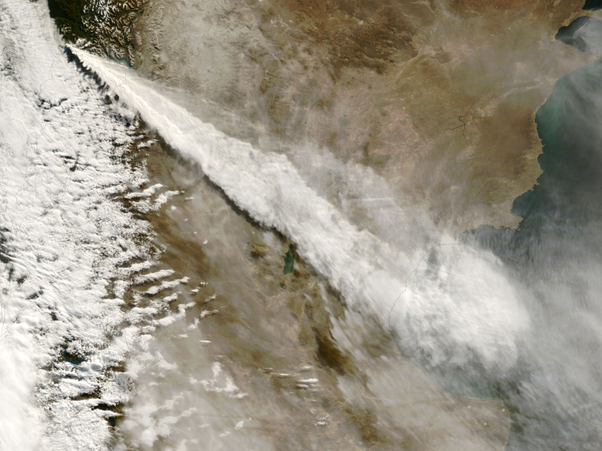Ancient literary monuments abound with descriptions of wide-scale or even global disasters that once struck whole communities, or even the whole of humanity. Plato described Atlantis island, which perished in a result of catastrophic flood and earthquake. The Bible tells about the Great Flood, which allegedly wiped out all living things, except those who waited it out in the ark. The Bible also describes “Ten Plagues of Egypt” — a complex series of disasters of biological, atmospheric, and hydrological in nature in Egypt which were allegedly God’s punishment for the Pharaoh’s refusal to let Jews go.
There are many more myths about ancient nation-wide or global disasters across the Earth, but these narratives have become popular, and thus fascinate many researchers, encouraging them to suggest hypotheses about their historicity. The presence of similar myths in different ancient countries further fuels these speculations. Centuries before the Bible was written, the narrative about the global flood and ark was included in the Epic of Gilgamesh in Mesopotamia. The book of Exodus describing “Plagues of Egypt” has interesting parallels in the “Admonitions of Ipuwer”, the monument of Ancient Egyptian literacy:
“This is what the Lord says: By this you will know that I am the Lord: With the staff that is in my hands I will strike the water of the Nile, and it will be changed into blood. The fish in the Nile will die, and the river will stink and the Egyptians will not be able to drink its water”.
Exodus 7:17–18
“Indeed, the river is blood, yet men drink of it. Men shrink from human beings and thirst after water”.
Admonitions of Ipuwer
Along with historians, these parallels attract creationists who regard the historicity of these events as the easy way to prove the existence of God and to confirm biblical narratives. This fact forces academic scholars to be careful in developing hypotheses about real events reflected in the Bible and other ancient myths. They try to reconstruct the whole chain of events, to highlight what is fully explainable by natural causes, to prevent pseudoscientific speculations. However, the wordings of ancient texts are so unclear that they can hardly be attributed to one specific event — there are always several competing hypotheses about the location and timing of ancient disasters. After all, antique and biblical stories could simply be migratory subjects spreading from folk to folk with subsequent transformation, and the presence of any real basis is not mandatory for such subjects to exist.

However, relatively recent studies of various aboriginal people across the Earth have revealed an astonishing persistence of collective memory about the events which occurred thousands of years ago. Patrick Nunn, Professor of Geography at University of the Sunshine Coast, studies traditional oral stories that are transmitted from generation to generation, and finds that they are a reliable source of geographic information.
In their legends, Australian aboriginal people describe the seashore contours that existed more than 7,000 years ago and were submerged after the end of the last glacial period. People of Tasmania remember the star positions on the night sky from 14,000 years ago. Dyirbal people describe the volcanic eruption and formation of a lake that occurred 9,000 years ago, as do the native people of Fiji, who have saved the collective memory about the volcanic eruption for 2,500 years.
These facts raise an intriguing question: if the collective memory about geographic changes and natural disasters survives for thousands of years, did Mediterranean, Mesopotamian, and European people save the memories about ancient wide-scale catastrophes as world-known myths? More specifically, if we can trace the legends of Dyirbal people to the real event of formation of Lake Eacham, does this mean that the Flood Myth or Ten Plagues of Egypt can be traced to real catastrophic events with very similar consecutions and appearances?

Even Patrick Nunn, who believes that ancient disaster stories are invaluable scientific data, expresses conservative estimates. He has really analysed the Atlantis myth and the Flood myth in his book Worlds in Shadow: Submerged Lands in Science, Memory and Myth, but he acknowledges that the respective stories were transformed beyond recognition in the course of centuries. As with some other scientists, he links the Atlantis myth to the Minoan eruption, but writes that the story was radically exaggerated:
“A volcanic eruption might become an island disappearing, later a “large” island, later still a continent and eventually “a chimeric place that takes whatever form its describer wishes to give it”– something that has spawned a vast literature about fictitious Atlantis”.
Worlds in Shadow: Submerged Lands in Science, Memory and Myth
Regarding the Flood Myth, he refers to a series of local floods broadly occurring in the early postglacial era. In the book, he hypothesises that the collapse of the Labrador ice shield evoked the rapid and global sea rise, but ascribes the Flood Myth to transformation of multiple local stories rather than one specific chronological and geographic point:
“There is not enough land ice on Earth to submerge all the continents. If the Greenland and Antarctic ice sheets melted, then the ocean surface would rise around 65 meters on average, but there is no evidence that the East Antarctic ice sheet (which would contribute >90% of this water) has melted within the period that modern humans have been on Earth. So the stories of global floods that are found in almost every culture on earth almost certainly represent cumulative stories of successive floods, locally devastating”.
Patrick Nunn, speaking to The Skeptic
These difficulties in locating and dating real archetypal events that gave rise to well-known myths are evident in our global society and the leading Ancient civilisations of the Old World, in contrast to the many aboriginal traditions which allow for the identification of events exactly. For the latter, these peoples generally inhabit compact territories for a long time, and if they describe any disastrous event, it could be easily attributed to their living area. All the remaining work is to find an appropriate volcano or an appropriate stretch in this area — most probably, one will have only one. But what made the myths of large civilised societies so transformable and difficult to trace?
This is the civilisation itself — more specifically, the geographic prerequisites for it.
In a well-known book Guns, Germs, and Steel, Jared Diamond outlines the geographical factors allowing civilisation and literacy to emerge. He argues that the main factor is the longitudinal direction of the longest dimension of a continent, allowing wide agricultural and cultural exchange between societies living in one climatic zone. This is the case of the Old World — and the same factor is the basis for a powerful transforming force which changes oral stories.
In one of my previous articles, I discussed the “tracking and tracing” of changes occurring to modern myths (for example, cryptozoological myths). I noticed that we need a significant amount of data to trace the myth’s changes — but ancient societies, even literal ones, did not produce so much data. It was thousands of years away from the invention of book printing, and the number of records is very limited. Once civilisation came, we lost the traces of our myths.

Thus, we cannot say how the ancient myths transformed — and where in the vast area of the ancient world they came to being. It is very tantalising to ascribe the “Egyptian darkness” to the Minoan eruption (like in a CuriosityStream film The Biblical Plagues) – but it is difficult to find the specific volcano who could give the first ancient people the experience of long-lasting darkness due to ash. And more so, this says nothing about floods, which were relatively frequent at the historical timescale. Every disaster could be unpredictably transformed in the collective memory. And a while longer, we will wonder: can we ever discover the ancient disaster behind any myth?


